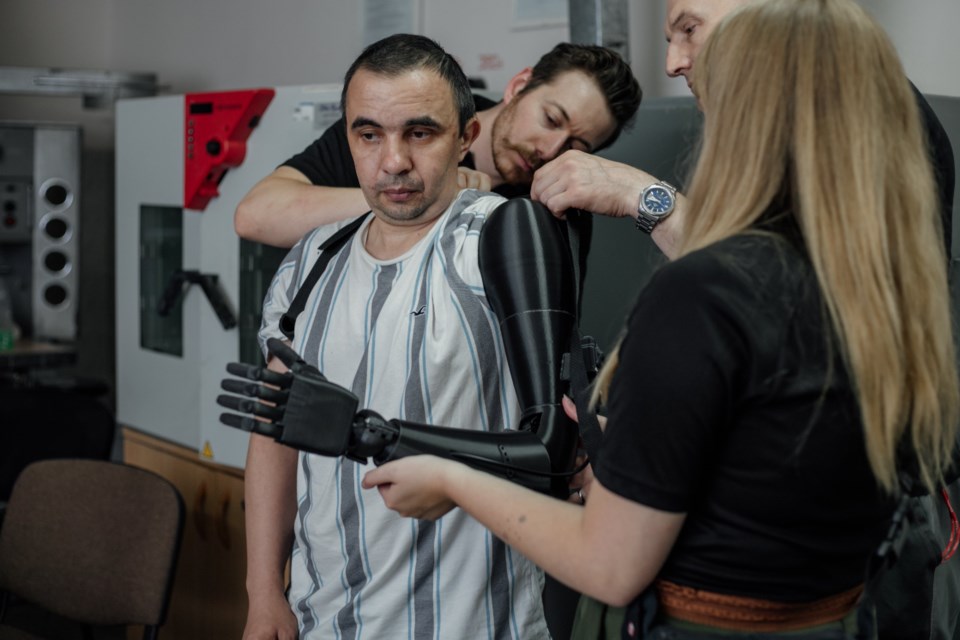A West Vancouver grad is putting his engineering talents to work to help provide for an unmet medical need around the globe – using a distinctly modern technology.
Michael Peirone grew up on the North Shore and graduated from West Vancouver’s Sentinel Secondary before going to study biomedical engineering at the University of Victoria.
It was there he met Nikolai Dechev, another former North Shore grad and professor of mechanical engineering at UVic, who was interested in the idea that 3D printing could be used to make low-cost prosthetic limbs.
Fast forward to 2023, and Peirone has gone from former co-op student to CEO of the non-profit organization Dechev founded, the Victoria Hand Project, now a registered charity which operates out of the University of Victoria.
In that role, Peirone now oversees the work of the charity in 11 countries around the world, providing 3D-printed prosthetic arms for amputees.
Started as a research project in 2014, the Victoria Hand Project has been instrumental in providing more than 300 prosthetic arms to people around the world.
In many of developing countries, “it’s very difficult to get prosthetic care,” said Peirone. For many people, “to buy a prosthetic arm out of pocket could cost as much as a year’s salary.”
Making low-cost options is “really what our charity is about,” he said.
Peirone recalls a visit to a clinic in Kenya when he was still a student and seeing a young boy of seven who had lost his hands in a fire. The boy had spied his prosthetic arm sitting on a table and excitedly grabbed it to show his mom, said Peirone. Once the hand was fitted, the boy was able to hold a pen and write for the first time, he said.
Most of the people helped by the Canadian charity have lost their hands to accidents, including those caused by lack of safety regulations, said Peirone. Land mines remain a source of injury in countries like Cambodia, even decades after the conflicts when they were first planted.
Most recently, the charity has been doing work in Ukraine, where the war has continued to result in injuries to both soldiers and civilians.
This summer, Peirone returned from a trip to Ukraine, where he met with young men who had lost arms and legs to the fighting in that country. One soldier who received a 3D printed prosthetic had lost his arm in an explosion, then helped a fellow soldier who had been partially blinded to medical care, he said.
Experiences like that have spurred his group to expand to new sites in Ukraine, he said, where there is already a waitlist at the existing prosthetics clinic.
While conventional prosthetic arms are manufactured through techniques that include injection molding and metal casting, the 3D printing process used by the organization to create the prosthetics means they can be created quickly and at low cost – about $120.
“Somebody can put the file on the 3D printer, start it and walk away, and it can print overnight,” said Peirone.
The charity designs the devices and comes up with workflows for how to make them.
They then partner with clinics in resource-poor communities and donate the 3D printers, scanner and tools needed. They then train local technicians on how to make the prosthetic limbs. The charity pays for training for the medical team. “And then we come back to Canada, and they continue to produce the devices for people in need.”
“It helps support the local healthcare infrastructure,” he said.
“It’s all about transferring the cutting-edge technologies to the people around the world and giving them the tools and the capabilities to produce these directly in their own communities.”


